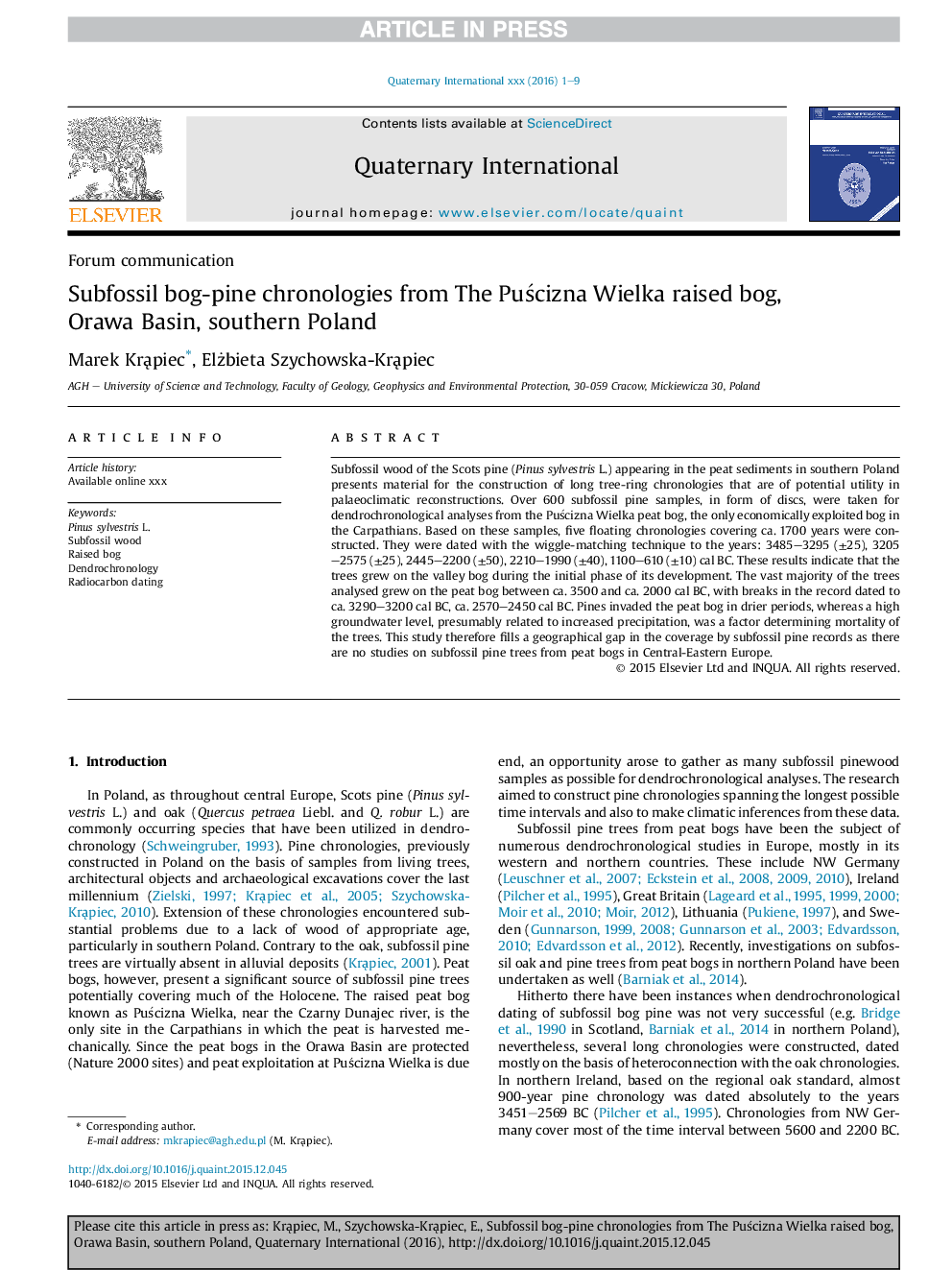| Article ID | Journal | Published Year | Pages | File Type |
|---|---|---|---|---|
| 5114159 | Quaternary International | 2016 | 9 Pages |
Abstract
Subfossil wood of the Scots pine (Pinus sylvestris L.) appearing in the peat sediments in southern Poland presents material for the construction of long tree-ring chronologies that are of potential utility in palaeoclimatic reconstructions. Over 600 subfossil pine samples, in form of discs, were taken for dendrochronological analyses from the PuÅcizna Wielka peat bog, the only economically exploited bog in the Carpathians. Based on these samples, five floating chronologies covering ca. 1700 years were constructed. They were dated with the wiggle-matching technique to the years: 3485-3295 (±25), 3205-2575 (±25), 2445-2200 (±50), 2210-1990 (±40), 1100-610 (±10) cal BC. These results indicate that the trees grew on the valley bog during the initial phase of its development. The vast majority of the trees analysed grew on the peat bog between ca. 3500 and ca. 2000 cal BC, with breaks in the record dated to ca. 3290-3200 cal BC, ca. 2570-2450 cal BC. Pines invaded the peat bog in drier periods, whereas a high groundwater level, presumably related to increased precipitation, was a factor determining mortality of the trees. This study therefore fills a geographical gap in the coverage by subfossil pine records as there are no studies on subfossil pine trees from peat bogs in Central-Eastern Europe.
Related Topics
Physical Sciences and Engineering
Earth and Planetary Sciences
Geology
Authors
Marek KrÄ
piec, Elżbieta Szychowska-KrÄ
piec,
